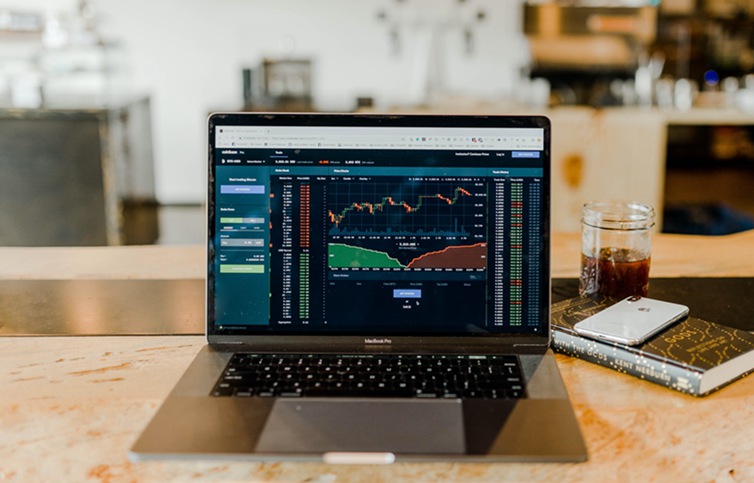RPT-BREAKINGVIEWS-US-China decoupling is crossing a Rubicon

By Una Galani
HONG KONG, April 15 (Reuters Breakingviews) - Decoupling is no longer just a political slogan. For the past decade, American administrations have tempered their references to China as an adversary by also talking up how the Asian country could be a potential partner. That optimism is largely gone. President Donald Trump's punitive sweeping tariffs on U.S. imports of Chinese goods obliterates the "small yard, high fence" approach of his predecessors. That old stance saw the United States erect barriers around narrow areas of trade, particularly in sensitive high-technology industries, while seeking cooperation with the People’s Republic on others.
Not one to be bullied into negotiations with Washington that lack a clear goal, President Xi Jinping's China pledges to “fight to the end". It points to an acceleration of what has been a gradual decoupling of the world's two largest economies. To peer beyond the rhetoric, Reuters Breakingviews examined trajectory of the trade, financial, corporate, educational and geopolitical ties between the two largest economies. Many of the numbers suggest a sharp deterioration.
TRADE TUMULT
Start with the exchange of goods, the traditional bedrock of the Sino-American connection. While Trump's first trade war in 2018 failed to end U.S. dependence on Chinese manufacturing, the president's tariff increases this month brought the levies on most Chinese goods to at least 145%. This risks collapsing much of the pair’s bilateral trade worth $582 billion in 2024. The White House exempted smartphones, computers and some other electronics but it also is studying the national-security risks arising from these heavily China-reliant supply chains. That suggests sector-specific duties will soon come into force.
Meanwhile, Trump's levies on other countries, now capped at 10% until early July, jeopardise Chinese exports to third countries, like Vietnam, that ship goods on to U.S. consumers. China’s share of U.S. imports fell 8 percentage points to 13.4% between 2017 and 2024, according to the U.S. Census Bureau, while it now only accounts for a third of American imports from Asia compared with half in 2018. But data from the UN Trade and Development shows its share of global merchandise exports rose from 12.7% to 14.2% over a similar period – suggesting possible rerouting of goods to the United States through other states. This figure could now start to reverse.
FRAYING FINANCE
The separation is picking up in the financial world too. Though the stock of U.S. foreign direct investment (FDI) in China stood at $127 billion in 2023, the annual flow of funds is shrinking. China's FDI position in the United States, meanwhile, dropped to $44 billion in 2023, down 16% since 2019. And the annual flow of funds from the People’s Republic been negative since 2020, implying that Chinese investors have been pulling money from American projects.
Western investors maintain a muted exposure to the world's second largest economy. The average allocation of global equity funds to Chinese assets peaked at barely 3% in April 2015. As of February 2025, it was under 2%, data from fund-flow tracker EPFR shows, only slightly improved from a low in early 2024. If China stimulates its economy aggressively, these allocations could rise.
Elsewhere, the U.S. financial industry shows few obvious signs of pulling back: cross-border claims on Chinese residents by American banks stood at an all-time high of nearly $150 billion as of September, according to data from the Bank for International Settlements. However, Wall Street bosses have privately told Reuters Breakingviews that their exposure to China is easier to liquidate than it was in the past, suggesting they’re ready for a quick exit if necessary.
Then there is China’s ownership of $1.1 trillion of U.S. Treasuries, as estimated by Brad Setser, senior fellow at the Council on Foreign Relations. This is perhaps the trickiest financial tie to unwind. The dollar holdings help Beijing to manage the yuan. It's not obvious what else China could buy if it sold the securities. And buying yuan-denominated assets with any proceeds would lead to an unwanted appreciation of China’s own currency at a time when Beijing is trying to steer the economy out of a debt-deflation spiral.
CAUTIOUS COMPANIES
Chinese companies have never had a huge local presence in the United States. But their assets in the country continue to plateau, Rhodium Group data shows. This trend will accelerate, especially if the United States succeeds in forcing China’s ByteDance to spin off the U.S. assets of viral-video app TikTok. Treasury Secretary Scott Bessent has also refused to rule out the possibility of delisting stocks. As of March, there were 286 Chinese companies listed on U.S. exchanges, with a total market capitalisation of $1.1 trillion.
American firms have much more at stake in China, in revenue terms, but the dependence is reducing. Take Starbucks SBUX.O. The coffee chain had 7,594 open stores in the People’s Republic as of September 2024, 26% more than two years ago, but net revenue from China is just 8.3% of the global total, a reduction of 1 percentage point over the same period. New CEO Brian Niccol is looking for strategic partnerships in the Asian country. Similarly, Apple AAPL.O and Tesla TSLA.O earn roughly a fifth of their net revenue from China, but both figures are slightly lower than they were two years ago.
STUDENT EXCHANGE
The flow of people between two countries is often overlooked but can be a leading indicator of how a bilateral relationship will evolve. There were just 469 U.S. students studying in China for academic credit in the 2022-2023 year – close to the lowest level in over two decades, according to Open Doors, a body sponsored by the U.S. Department of State. That suggests America’s understanding of China will plunge in years to come.
While the allure of the United States endures for Chinese students, they’re now a smaller proportion of foreigners attending U.S. universities than Indians, who lead with a 29% share or 331,602 students. It complements the view in New Delhi that the South Asian nation could eventually be a top beneficiary of the U.S. trade war, thanks to its own high barriers to foreign investment from China.
TAIWAN TENSIONS
The issue of Taiwan often sets the tone for the U.S.-China relationship. The United States’ “One-China” policy acknowledges Beijing’s claims of sovereignty over Taiwan, a democratically governed island. Yet Washington may impose large-scale sanctions, or potentially even use force, if China invades.
Goldman Sachs’ Cross-Strait Risk Index counts the number of articles that mention geopolitical tension between Taiwan and mainland China. This has trended upwards since Trump's "Liberation Day" tariff announcement on April 2. There is heightened speculation that Washington’s trade war could evolve into a financial war and, eventually, a real conflict that would involve the island territory. Yet a market-based measure derived from Taiwanese equities suggests less cause for alarm so far.
THE UPSHOT
The gradual deterioration of the Sino-American relationship is set to accelerate as Washington takes aim at its trade deficit and cites national security to examine supply chains that lead back to China. The data suggests that companies, financial institutions and even university students were already doing their bit to speed decoupling. In that respect, Trump’s second China trade war is pushing on an open door.
Follow @ugalani on X




